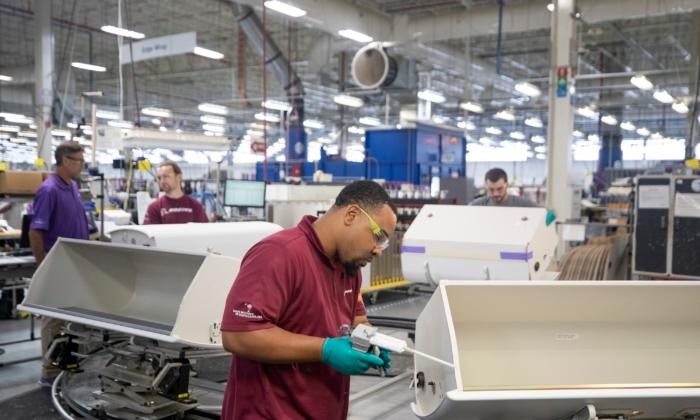WASHINGTON—Wholesale prices in the United States decelerated again last month, the latest sign that inflationary pressures are easing in the face of the Federal Reserve’s streak of interest rate hikes.
The government’s producer price index—which measures inflation before it reaches consumers—rose just 0.1 percent last month from June 2022, the smallest such increase since August 2020. And from May to June, prices rose an identical 0.1 percent after having fallen 0.4 percent from April to May.
The index that the Labor Department issued Thursday reflects prices charged by manufacturers, farmers, and wholesalers. It can provide an early sign of how fast consumer inflation will rise.
On Wednesday, the government reported that consumer prices in June rose just 3 percent over the previous 12 months—the mildest such pace since early 2021. The slowdown was driven by easing prices for gasoline, airline fares, used cars, and groceries. Year-over-year consumer price inflation has steadily dropped since peaking at a four-decade high of 9.1 percent in June 2022.
Excluding the volatile categories of food and energy, so-called core wholesale inflation rose 0.1 percent from May to June and 2.4 percent from 12 months earlier. The year-over-year gain in core wholesale prices was the smallest since January 2021.

Gasoline prices rose 3.4 percent from May to June, offsetting a drop in the prices of other goods, including iron and steel scrap.
In their drive to tame inflation, the Fed’s policymakers have raised their benchmark interest rate 10 times since March 2022. The resulting higher borrowing costs—for mortgages, auto loans, credit cards and many forms of business borrowing—have slowed the economy and cooled the job market somewhat. But so far, the economy has managed to defy expectations that it would inevitably sink into a recession.
Despite this week’s better-than-expected inflation data, the Fed is considered all but sure to raise its benchmark rate when it meets in two weeks. But with price increases slowing steadily, the central bank could decide to hold off on what had been expected to be another rate hike in September, should inflation continue to cool.
Rubeela Farooqi, chief U.S. economist at High Frequency Economics, noted that wholesale price increases are already coming in below the 2 percent year-over-year inflation rate that the Fed wants to see.
“On the consumer side,’’ she cautioned in a research note,“ progress has been slower,” though she expects consumer prices to decelerate further this year and into 2024.
Ms. Farooqi said she didn’t expect the June inflation numbers to “to change the outcome of the upcoming (Fed) meeting’’ at which she, like most economists, expects a quarter-point hike in the central bank’s benchmark rate. That rate affects many consumer and business loans throughout the economy.





